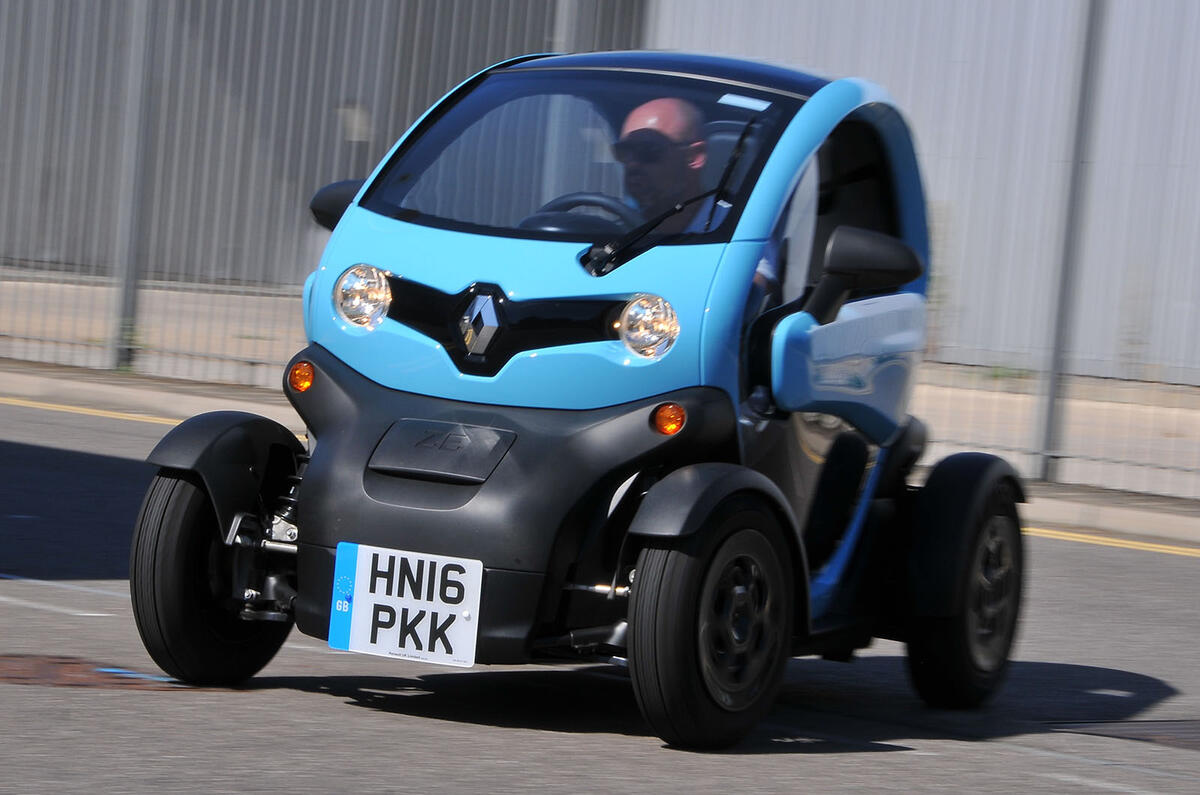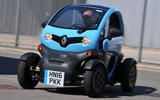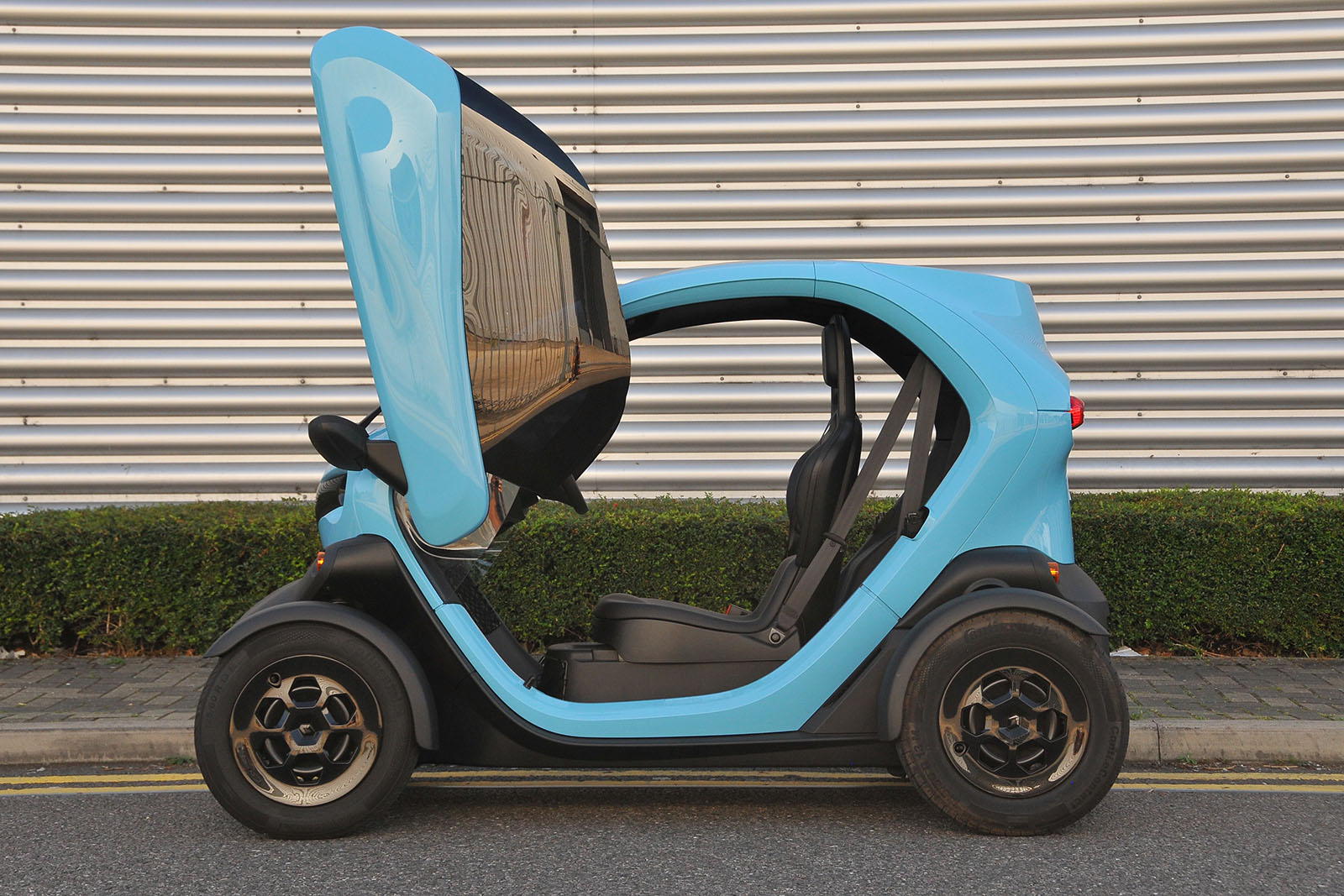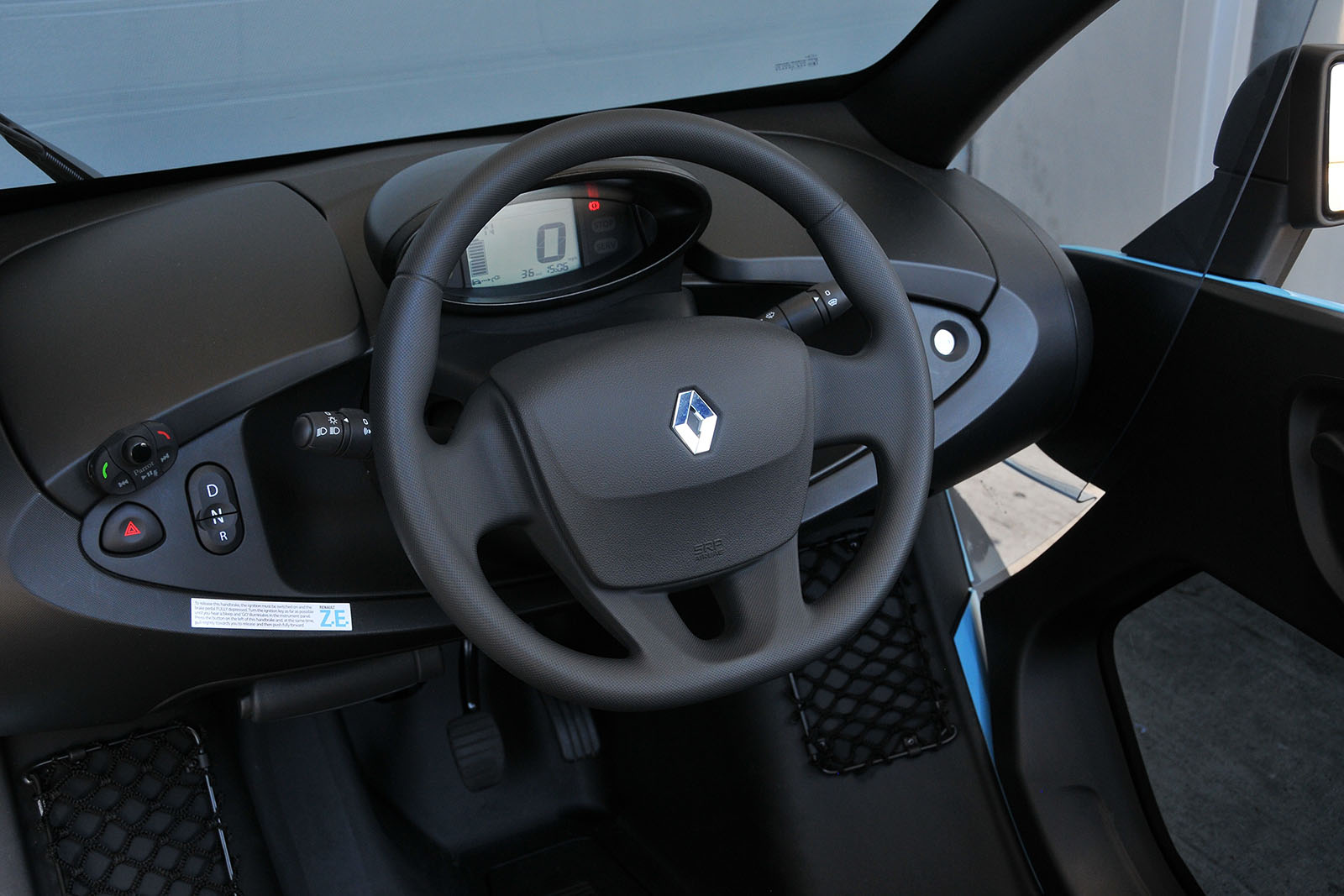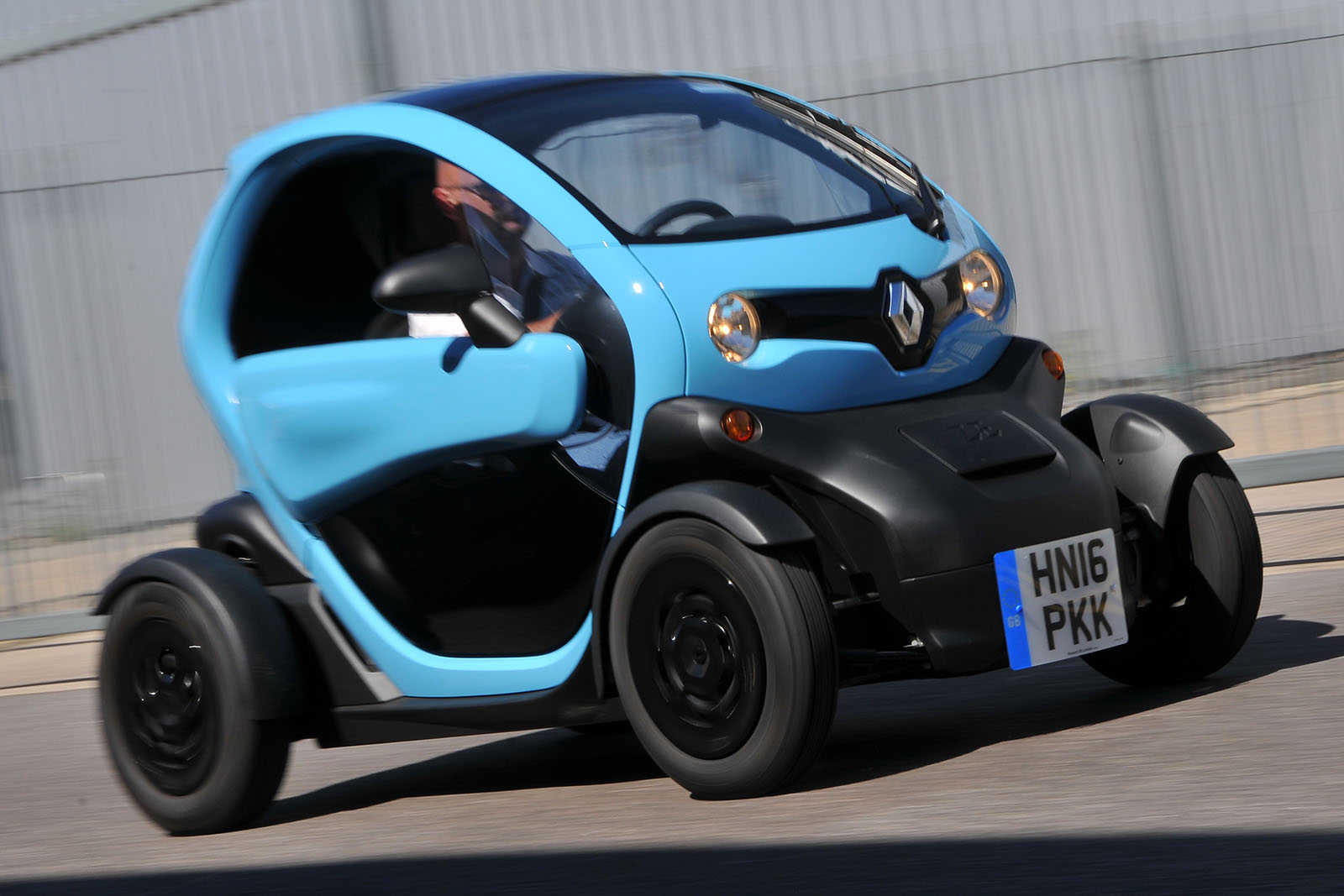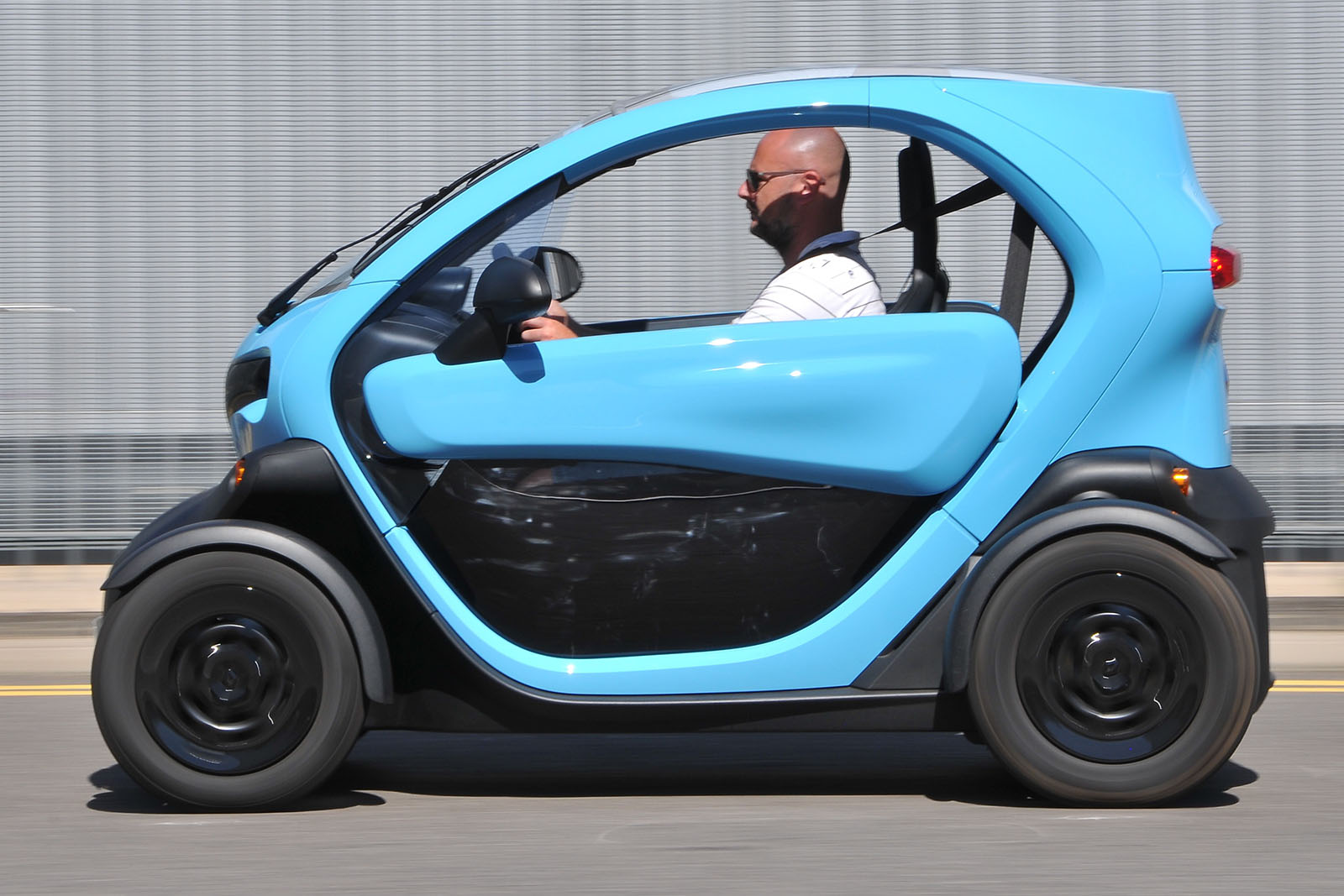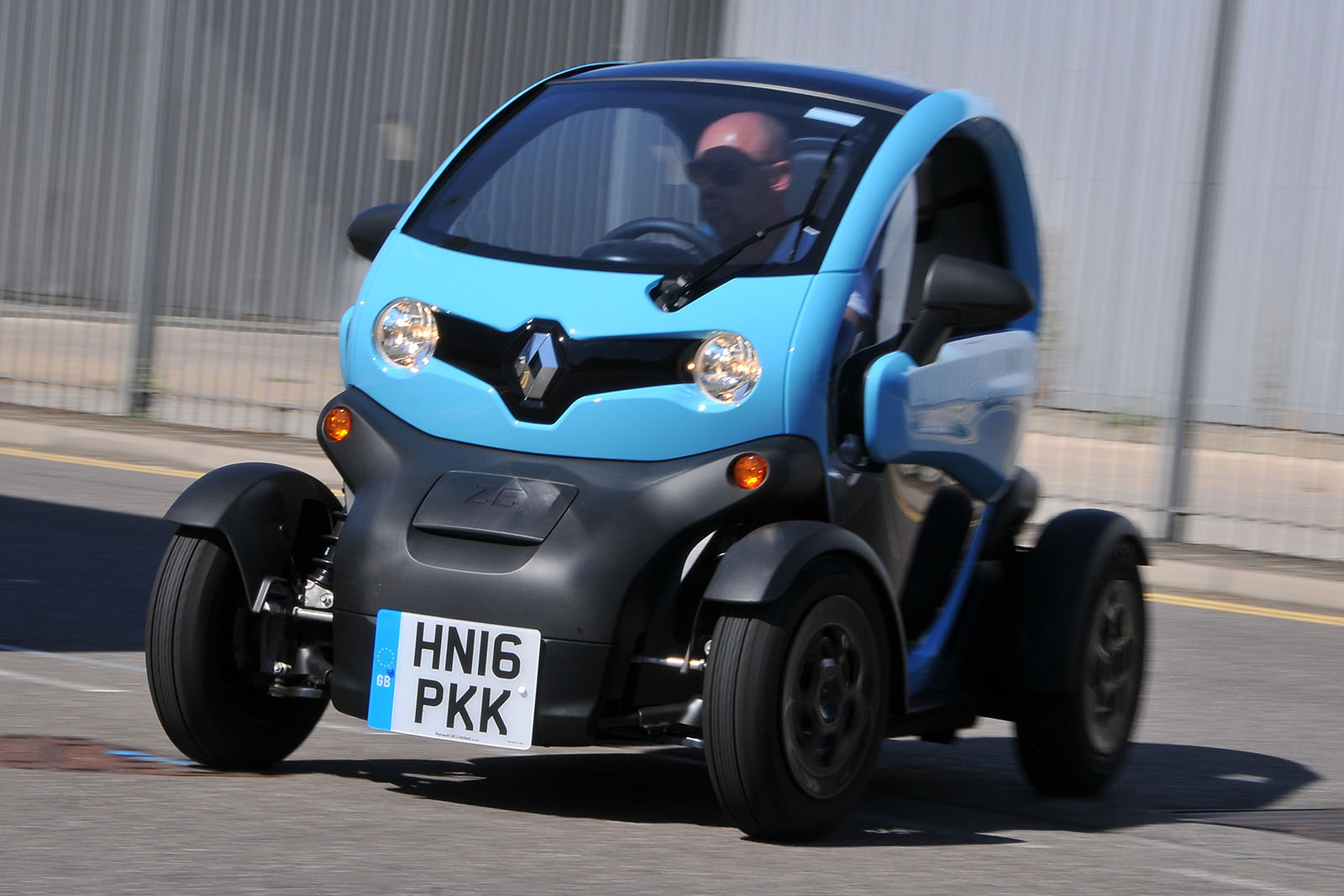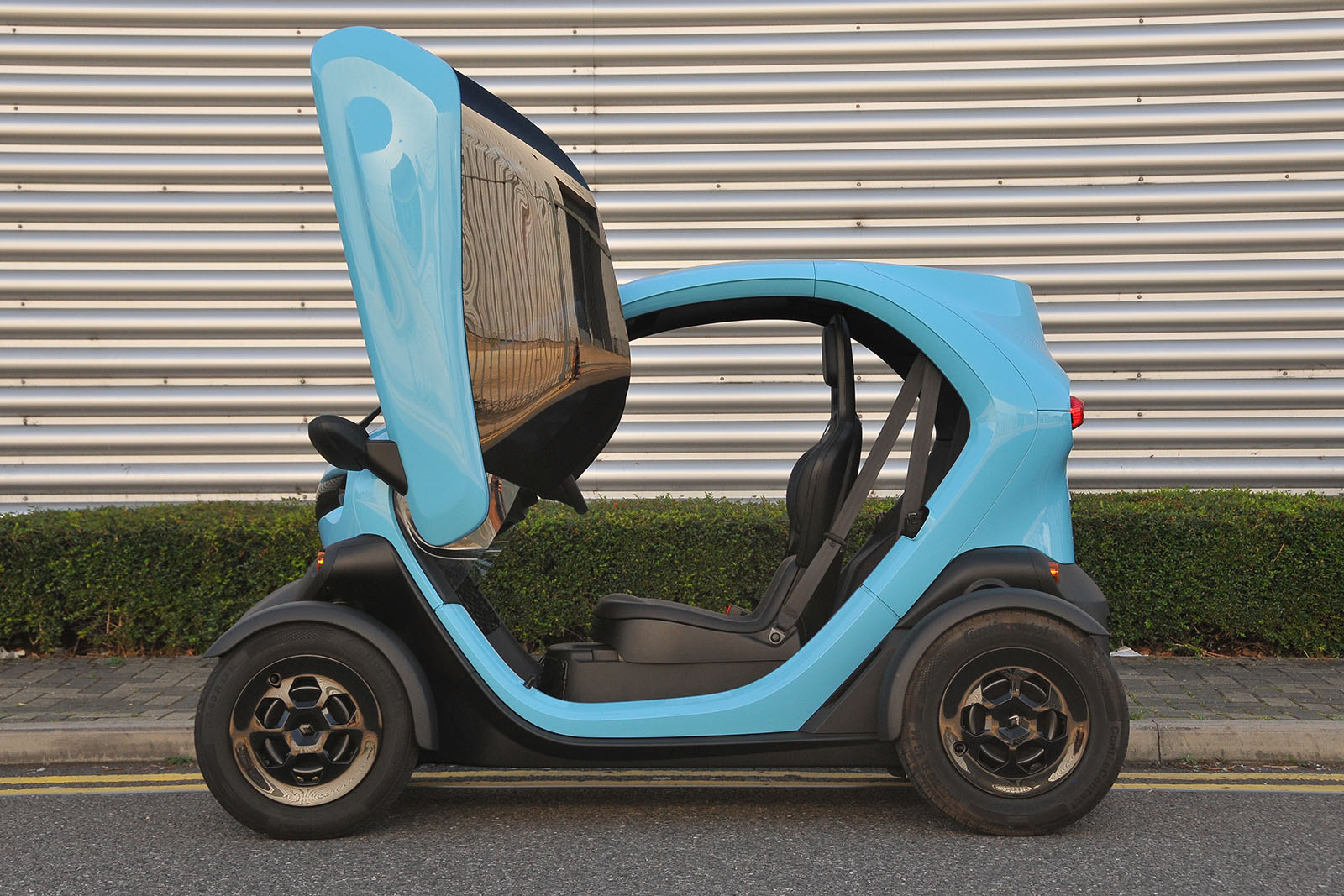Despite not being on sale for a few years now, the Renault Twizy, an electric quadricycle (important to note that it's not an electric car) with two seats arranged in tandem, continues to fascinate and delight those who glimpse one.
Yes, it’s a bit chilly in winter, but otherwise the Twizy has much to recommend it. Such as? Well, it doesn’t take long to charge via a domestic socket, early examples are inexpensive (prices start at around £4000) and driving one will put a smile on your face.
A cynic might point out that the charging time is so short – around three and a half hours – because the battery is tiny (6.1kWh), it’s cheap because new ones weren’t exactly expensive (from £7000 in 2012) and when you’re smiling it’s only with relief that it hasn’t run out of power (its range is around 40 miles) and your back is still in one piece (the stiff suspension makes for entertaining handling at the expense of comfort).
A scooter would be cheaper and better suited to urban travel, they may also say. But in a Twizy you’re riding more safely on four wheels attached to a chassis tuned by – get this – RenaultSport.
Not only that, but you’re also protected by a steel frame and crumple zones front and rear, there’s an airbag in the steering wheel and you’re secured to your seat by a four-point seatbelt. You sit quite high in the Twizy, so all-round visibility is good.
The dashboard is simple but attractive and includes two gloveboxes, one of them lockable. A comprehensive trip computer keeps you abreast of range and the instrument display of battery capacity.




